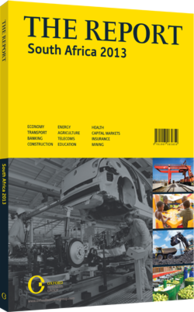OBG talks to Rob Davies, Minister of Trade and Industry

Interview: Rob Davies
When do you anticipate a free trade agreement (FTA) with African regional trading blocs?
ROB DAVIES: Colonialism divided Africa into 54 economies. The broadening of integration across the regional blocs, rather than the deepening of integration within them, is based on recognising that individually we lack a large enough population base to sustain and support much-needed economic diversification and industrialisation.
Tripartite FTA negotiations have been making progress, with the understanding that the focus will be on promoting FTAs among members that do not yet have any kind of preferential agreements among themselves. So, for example we are negotiating with the likes of Egypt, Kenya and Uganda on individual agreements. This exercise is a developmental integration programme; recognising that the barriers to increasing intra-regional trade are not only about tariffs, but also include both hard and soft cross-border issues such as infrastructure connectivity and the harmonisation of transport permits. Improved road and rail connectivity is key, and an area in which the Brazil, Russia, India, China, South Africa (BRICS) grouping can play an important role, for example via the BRICS-led development bank that is now being negotiated.
How can increased regional trade contribute to industrialisation and domestic beneficiation?
DAVIES: During its chairmanship of the Council of African Ministers of Industry, South Africa worked to identify areas where Africa could industrialise. Three areas of focus emerged: mineral beneficiation, agro-processing and the pharmaceuticals industry.
There are two meanings of beneficiation. The more common interpretation is adding value to mineral products before exporting them. For example, converting mineral sands into titanium alloy, creates an export value of $100,000 per tonne can be earned over $440 per tonne for the sand. A second component of beneficiation is to create a competitive advantage for manufacturing investment based on our access to mineral products. For instance, while the global platinum price appears to have peaked, in turn reducing potential export earnings, there are domestic industrial opportunities that platinum could feed into such as jewellery, fuel cell technologies and autocatalytic converters.
In what way could local content requirements help boost the domestic manufacturing sector?
DAVIES: In addition to some of the continental sectors ripe for industrialisation, we see potential in several engineering industries, such as metals fabrication and capital and transport equipment. The government has taken the deliberate decision that our national infrastructure programme serves not just as a counter-cyclical intervention, but also as a tool of industrial development. In particular, where the public sector is involved, we will introduce localisation requirements based on analysis of what we can produce and how this will deepen our industrial development.
South Africa and the rest of Africa need to evolve from being consumers of products and technology from other countries, into the actual producers of the inputs. One sector we are looking at is renewable energy, where we want to manufacture energy generation and energy-saving equipment domestically and have mandated that a quarter of new energy generation by 2030 comes from renewable sources. The logic is to support both the environment and the economy.
What changes are being made to Broad-Based Black Economic Empowerment (B-BBEE) scorecards?
DAVIES: We aim to make broaden empowerment by focusing more on the contribution of companies beyond ownership. We are amending the B-BBEE codes to ensure greater involvement among larger businesses looking to earn empowerment points in things like supplier and skills development. So, if all a company does are equity deals with individuals, and that is the extent of its contribution to empowerment, it will score lower than a firm making a broader range of contributions.
You have reached the limit of premium articles you can view for free.
Choose from the options below to purchase print or digital editions of our Reports. You can also purchase a website subscription giving you unlimited access to all of our Reports online for 12 months.
If you have already purchased this Report or have a website subscription, please login to continue.

